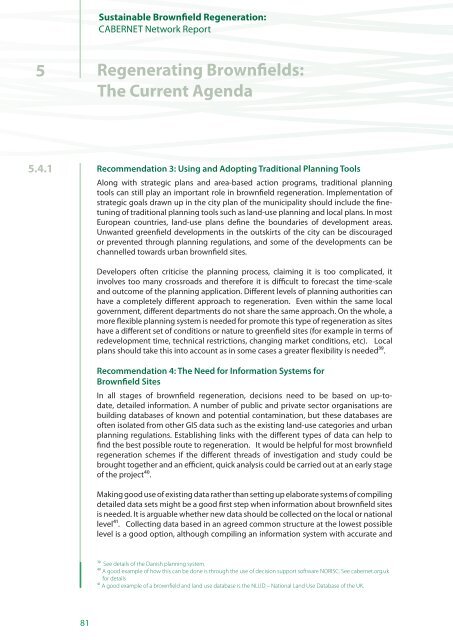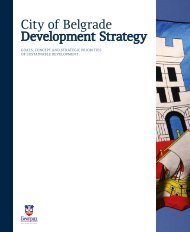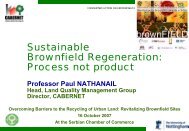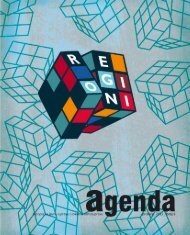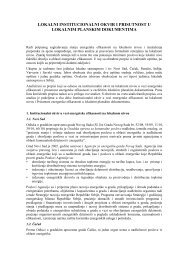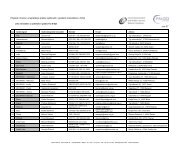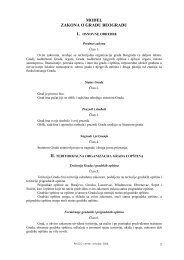Sustainable Brownfield Regeneration: CABERNET Network Report
Sustainable Brownfield Regeneration: CABERNET Network Report
Sustainable Brownfield Regeneration: CABERNET Network Report
Create successful ePaper yourself
Turn your PDF publications into a flip-book with our unique Google optimized e-Paper software.
<strong>Sustainable</strong> <strong>Brownfield</strong> <strong>Regeneration</strong>:<strong>CABERNET</strong> <strong>Network</strong> <strong>Report</strong>5Regenerating <strong>Brownfield</strong>s:The Current Agenda5.4.1 Recommendation 3: Using and Adopting Traditional Planning ToolsAlong with strategic plans and area-based action programs, traditional planningtools can still play an important role in brownfield regeneration. Implementation ofstrategic goals drawn up in the city plan of the municipality should include the finetuningof traditional planning tools such as land-use planning and local plans. In mostEuropean countries, land-use plans define the boundaries of development areas.Unwanted greenfield developments in the outskirts of the city can be discouragedor prevented through planning regulations, and some of the developments can bechannelled towards urban brownfield sites.Developers often criticise the planning process, claiming it is too complicated, itinvolves too many crossroads and therefore it is difficult to forecast the time-scaleand outcome of the planning application. Different levels of planning authorities canhave a completely different approach to regeneration. Even within the same localgovernment, different departments do not share the same approach. On the whole, amore flexible planning system is needed for promote this type of regeneration as siteshave a different set of conditions or nature to greenfield sites (for example in terms ofredevelopment time, technical restrictions, changing market conditions, etc). Localplans should take this into account as in some cases a greater flexibility is needed³⁹.Recommendation 4: The Need for Information Systems for<strong>Brownfield</strong> SitesIn all stages of brownfield regeneration, decisions need to be based on up-todate,detailed information. A number of public and private sector organisations arebuilding databases of known and potential contamination, but these databases areoften isolated from other GIS data such as the existing land-use categories and urbanplanning regulations. Establishing links with the different types of data can help tofind the best possible route to regeneration. It would be helpful for most brownfieldregeneration schemes if the different threads of investigation and study could bebrought together and an efficient, quick analysis could be carried out at an early stageof the project⁴⁰.Making good use of existing data rather than setting up elaborate systems of compilingdetailed data sets might be a good first step when information about brownfield sitesis needed. It is arguable whether new data should be collected on the local or nationallevel⁴¹. Collecting data based in an agreed common structure at the lowest possiblelevel is a good option, although compiling an information system with accurate and³⁹ See details of the Danish planning system.⁴⁰ A good example of how this can be done is through the use of decision support software NORISC. See cabernet.org.ukfor details⁴¹ A good example of a brownfield and land use database is the NLUD – National Land Use Database of the UK.81


